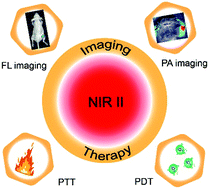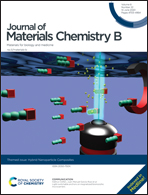Tumor microenvironment-activated NIR-II reagents for tumor imaging and therapy
Abstract
Second near-infrared window (NIR-II, 1000–1700 nm) absorption and fluorescent agents have attracted great attention because they can overcome the penetration limitation of the first near-infrared window (NIR-I, 750–1000 nm). However, these always “on” agents face the severe problem of being susceptible to retention and phagocytosis by the reticuloendothelial system after intravenous administration, which results in signal interference during diagnosis and side effects during treatment. Accordingly, tumor microenvironment-responsive smart agents (smart NIR-II agents), whose imaging and therapeutic functions can only be triggered in tumors, can overcome this limitation. Thus, NIR-II smart agents, which exhibit a combined response to the tumor microenvironment and NIR-II, make full use of the advantages of both triggers and improve the precision diagnosis and effective treatment of cancer. This review summarizes the recent advances in tumor microenvironment-activated NIR-II agents for tumor diagnosis and treatment, including smart NIR-II fluorescence imaging, photoacoustic imaging, photothermal therapy and photodynamic therapy. Finally, the challenges and perspectives of NIR-II smart agents for tumor diagnosis and treatment are proposed.

- This article is part of the themed collections: Journal of Materials Chemistry B Lunar New Year collection 2021 and Hybrid Nanoparticle Composites


 Please wait while we load your content...
Please wait while we load your content...